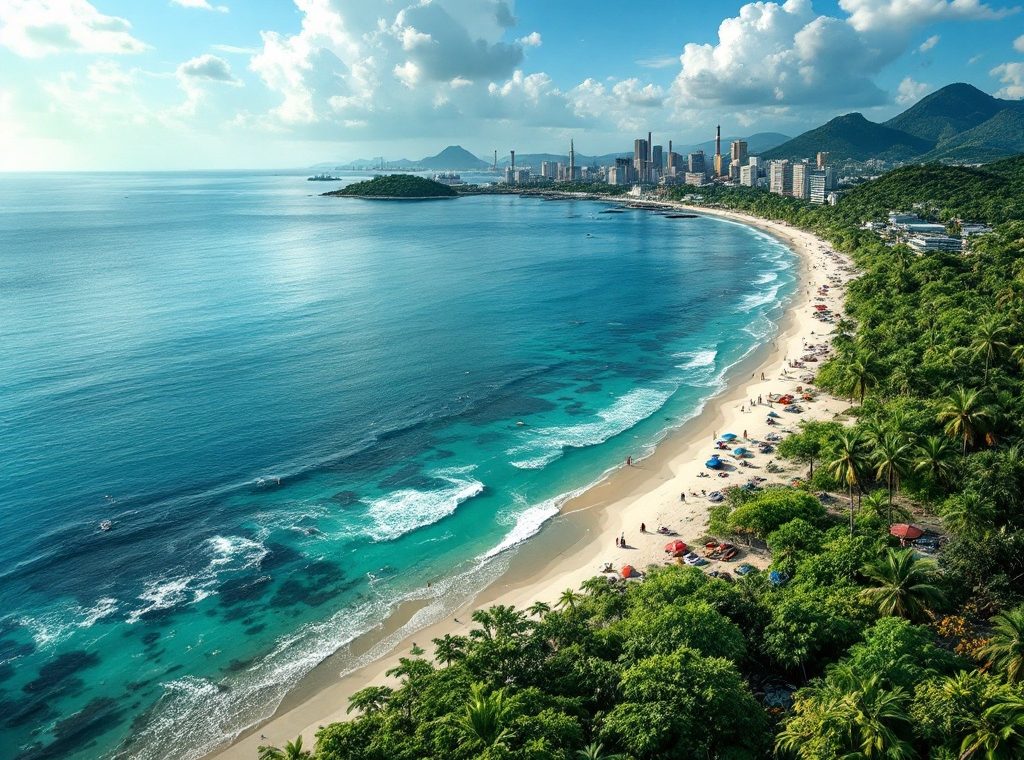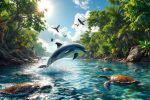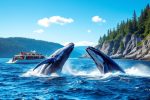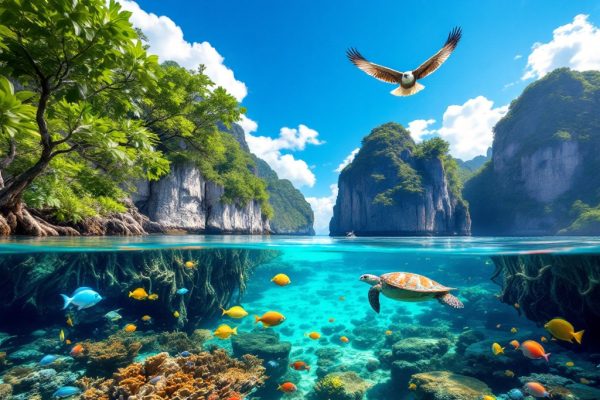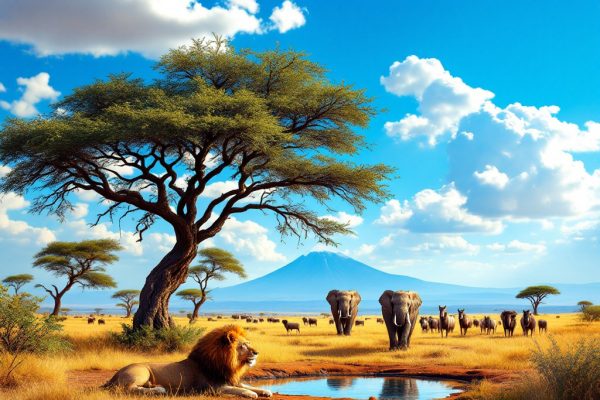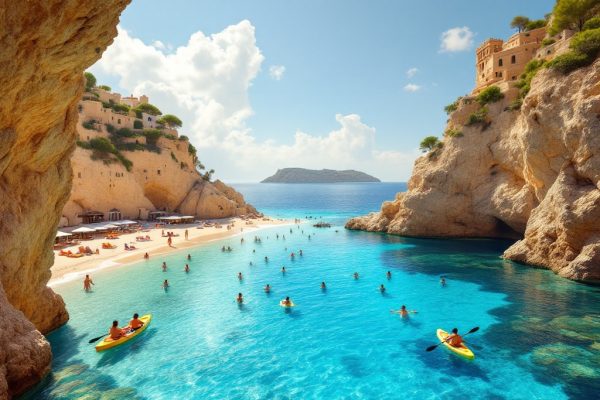Factors Influencing Guanabara Bay: Keeping Biodiversity Safe
Guanabara Bay, a vital hub of biodiversity, faces dire threats from pollution and habitat loss. Untreated sewage, industrial waste, and unsustainable practices endanger this precious ecosystem. Discover how crucial conservation efforts, like restoring mangrove forests and stricter pollution controls, are working to revive the bay. Learn how you can be part of the solution to protect this irreplaceable natural treasure. Dive in to explore the challenges and discover the innovative solutions offering hope for Guanabara Bay’s future.
Important information
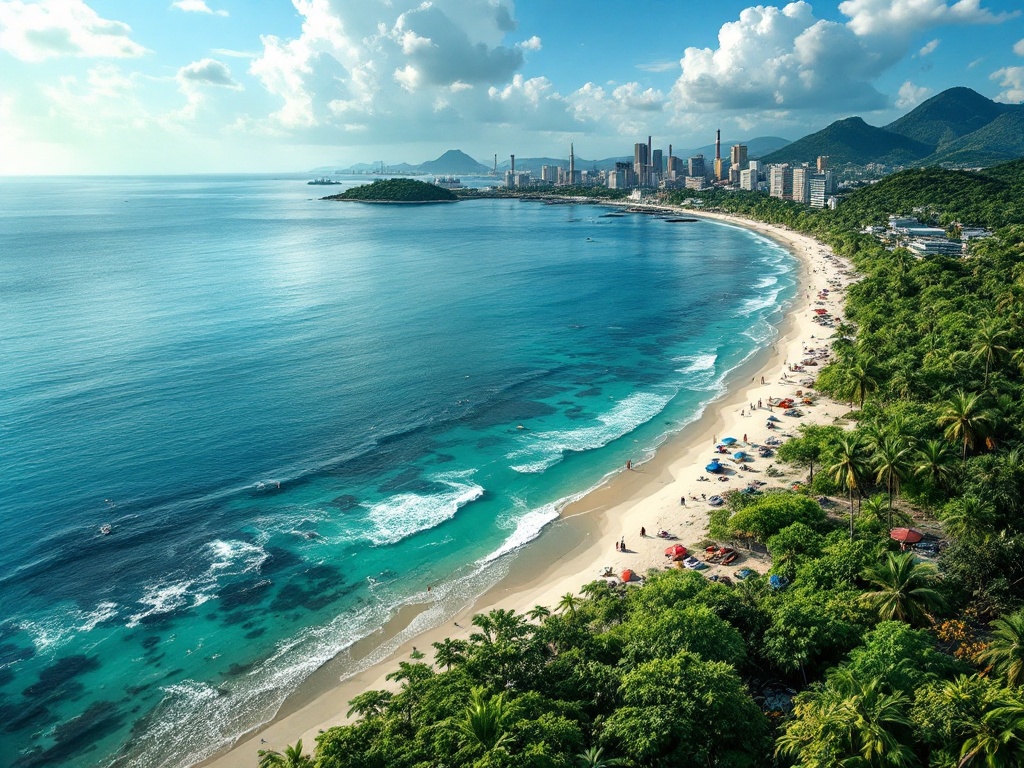
- Guanabara Bay suffers from pollution (sewage, industrial waste, agricultural runoff), habitat destruction, and overfishing, all worsened by climate change.
- Restoration efforts focus on pollution control, habitat restoration (especially mangroves and riparian forests), and sustainable fishing.
- Community involvement and education are key to successful conservation, with programs like Reforest Rio demonstrating positive impacts.
- Nature-based solutions, such as restoring riparian forests and mangroves, offer sustainable and cost-effective ways to improve water quality, protect against erosion, and support biodiversity.
- The Viva Água Guanabara Bay Movement promotes water security and climate resilience by empowering local communities and implementing projects to mitigate climate change effects.
Understanding Guanabara Bay: A Critical Basin for Biodiversity
Guanabara Bay, a vibrant ecosystem rich in biodiversity, faces significant environmental threats. Pollution, habitat degradation, and unsustainable practices jeopardize its fragile balance. Conservation is crucial, demanding stricter pollution controls and habitat restoration. Establishing marine protected areas and promoting sustainable fishing are essential for the bay’s long-term health.
Key Conservation Efforts
- Implementing stricter pollution controls.
- Restoring degraded habitats.
- Creating marine protected areas.
- Promoting sustainable fishing practices.
Community Involvement and Education
Engaging local communities and promoting environmental education are essential for fostering stewardship. Ongoing initiatives offer hope, including habitat restoration projects and pollution reduction programs. The establishment of protected marine areas, combined with local involvement in restoring mangrove forests and wetlands, demonstrates a growing commitment to protecting the bay’s diverse species.
Regulations targeting industrial pollution and improved waste management are critical for safeguarding the bay’s overall health.
Environmental Challenges in the Guanabara Bay Region
Guanabara Bay faces critical environmental threats. Untreated sewage, industrial waste, and agricultural runoff pollute the bay, harming marine life. Coastal development destroys vital habitats, while overfishing depletes biodiversity, straining the ecosystem. Climate change intensifies these problems, with rising sea levels and fluctuating water temperatures adding to the strain. The following factors contribute to the bay’s uncertain future:
Pollution Sources
- untreated sewage,
- industrial waste,
- agricultural runoff.
Ecosystem Stressors
- habitat destruction,
- overfishing,
- climate change impacts.
Impact of Urban Development and Climate Change
Guanabara Bay is under serious threat from urban development and climate change. Expanding cities encroach upon vital habitats, disrupting natural water flow. Climate change intensifies these issues, with rising sea levels and altered rainfall patterns increasing polluted runoff. This damages the bay’s delicate coastal ecosystems and threatens its overall health.
Consequences of Anthropogenic Interference
Guanabara Bay has suffered from human activity since the 16th century, enduring significant pollution and environmental damage. This has led to severe degradation of the bay.
Water Quality and Pollution Issues
Guanabara Bay is facing severe pollution, which is harming marine life and endangering human health. The bay’s water quality is a serious environmental concern.
Heavy Eutrophication and Its Effects
Guanabara Bay is significantly affected by eutrophication, a process where excessive nutrients cause harmful algal blooms. These blooms consume large amounts of oxygen, leading to dead zones that harm marine life and severely degrade water quality. Fish populations are especially susceptible to the resulting hypoxia, and the bay’s entire ecosystem suffers as a consequence.
High Organic Pollution and Environmental Degradation
Guanabara Bay is heavily polluted with organic waste, severely impacting its ecosystem and diminishing its biodiversity.
Restoration and Conservation Efforts
The Guanabara Bay restoration project is crucial for cleaning its waters and reviving its diverse ecosystem. The project aims to achieve a healthy and thriving bay.
Guanabara Bay Pollution Clean-Up Program
The Guanabara Bay Pollution Clean-Up Program is tackling the immense challenge of restoring the bay’s health. Pollution poses a significant threat, and the program focuses on three key sources: sewage, industrial waste, and agricultural runoff. These pollutants harm marine life by causing diseases, disrupting reproduction, and creating oxygen-depleted dead zones. The program diligently works to protect both marine life and human health, aiming to clean the bay and restore its vital ecosystem. This will benefit both the environment and the surrounding community.
Role of the Reforest Rio Program
The Reforest Rio project plays a crucial role in revitalizing the ecosystems of Guanabara Bay. Local communities are central to the project’s success, having already reforested an impressive 3,600 hectares. This vital program significantly improves water quality and enhances the bay’s biodiversity.
The Role of Mangroves and Riparian Forests
Mangroves are essential for coastal protection, forming natural barriers against storms and erosion. These vital habitats shelter a variety of fish and marine life, supporting local fisheries. Similarly, riparian forests, growing along rivers and streams, play a key role in protecting Guanabara Bay. Their roots stabilize riverbanks and filter pollutants, preventing sediment runoff and improving water quality, which ultimately benefits the bay’s ecosystem and overall health. The benefits of these ecosystems can be summarized as follows:
Mangroves
- Coastal protection against storms and erosion.
- Shelter a variety of fish and marine life.
- Support local fisheries.
Riparian Forests
- Protect Guanabara Bay.
- Stabilize riverbanks and filter pollutants.
- Prevent sediment runoff and improve water quality.
Coastal Protection and Support for Fisheries
Coastal mangrove forests are vital for protecting against erosion and lessening the impact of storm surges. These crucial ecosystems also serve as nurseries and habitats for numerous fish species, directly supporting local fisheries and the communities that depend on them. Mangrove conservation is essential for both the environment and the economy.
Reducing Sediment Input Through Forest Restoration
Riparian forest restoration is essential for the health of Guanabara Bay. These green buffers act as natural filters, trapping sediment from runoff before it pollutes the bay. This process not only clears the water and reduces turbidity, but also improves aquatic life. Furthermore, the trees’ roots stabilize riverbanks, minimizing erosion and further reducing sediment flow. Beyond cleaner water, this natural filtration system supports a healthier, more vibrant bay ecosystem. Revitalizing these forests is vital for Guanabara Bay’s overall improvement.
Benefits of riparian forest restoration:
- Traps sediment, reducing pollution and turbidity.
- Improves aquatic life by clearing the water.
- Stabilizes riverbanks and minimizes erosion.
- Supports a healthier, more vibrant bay ecosystem.
Impact on Guanabara Bay:
Restoring riparian forests is crucial for the overall improvement of Guanabara Bay’s health and ecosystem.
Importance of Nature-Based Solutions for Guanabara Bay
Nature-based solutions offer a sustainable and cost-effective method for protecting Guanabara Bay by revitalizing essential ecosystems such as mangroves and riparian forests. These initiatives considerably enhance water quality, reduce sediment runoff, and support local fisheries. Moreover, habitat preservation strengthens coastal defenses and promotes the bay’s overall health. By collaborating with nature, these solutions tackle environmental problems and provide enduring advantages for the ecosystem and the community.
Enhancing Water Security and Climate Resilience
The Viva Água Guanabara Bay Movement champions water security and climate resilience through community empowerment and diverse projects. Its core mission is adapting to climate change impacts by mitigating and preparing for its effects. This includes preventing flooding and developing water conservation strategies. The program actively involves local residents, recognizing that community engagement is key to success. Despite the significant challenges, the program strives to make a tangible difference in the region.
Agroforestry and Ecosystem Services Recovery
Agroforestry systems offer a multitude of benefits, including boosting biodiversity by creating diverse habitats. They also improve water quality through reduced runoff and pollutant filtration. Soil health improves as organic matter increases and erosion decreases. Moreover, the enhanced carbon sequestration offered by agroforestry helps combat climate change. Local communities also benefit from these systems through diversified income streams. Ultimately, these advantages contribute to restoring crucial ecosystem services, particularly vital in areas like Guanabara Bay. Here’s a summary of the key advantages:
- Enhanced Biodiversity: creating diverse habitats supports a wider range of species.
- Improved Water Quality: reduced runoff and pollutant filtration leads to cleaner water resources.
- Better Soil Health: increased organic matter and reduced erosion improves soil fertility.
- Climate Change Mitigation: enhanced carbon sequestration helps combat climate change.
- Community Benefits: diversified income streams provide economic stability for local populations.
- Ecosystem Restoration: contributes to restoring vital ecosystem services, crucial for areas like Guanabara Bay.

